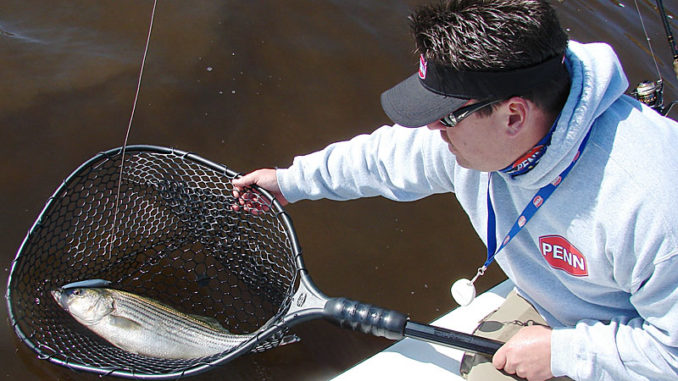
Disastrous 2018 fall gives way to good winter fishing in rivers around Wilmington, N.C.
It’s still way too early to rush around proclaiming, “They’re back.” But fishermen are seeing striped bass return to the rivers and creeks around Wilmington, N.C.
This fishery was hit hard in September 2018, when four days of heavy rain from Hurricane Florence washed an overabundance of organic matter into the water, and the dissolved oxygen count plunged to near zero. Fish kills followed, and many fish fled the area in search of better water. Striper fishing around Wilmington last winter was as slow as anyone could remember.
The rebuild isn’t finished by any means. But fishermen have been thrilled to see the numbers of striped bass increase through December and January. The rivers and creeks in the Cape Fear River system were already under a possession moratorium that hasn’t been lifted. But anglers have seen some days of surprisingly good catch-and-release striper fishing.
Striper fishing around Wilmington is primarily a winter activity. It begins in December and lasts into the spring. Anglers mainly focus on the Cape Fear. They also fish in the Northeast Cape Fear and Brunswick rivers, plus many of their tributary creeks. The rivers vary in salinity with the amount of rainfall, but jurisdictional boundaries don’t change.
This is all tidal water
Legally, only the Cape Fear has coastal waters, which are below the Cape Fear Memorial Bridge. The Cape Fear upriver from the bridge, plus the Northeast Cape Fear and Brunswick rivers are classified as joint/inland waters. All the creeks in this area are classified as inland waters. This is important as license requirements vary.
All of the water is tidal, and that affects fishing. A popular tactic is to target creek mouths during a falling tide. Stripers, plus occasional red drum, speckled trout and catfish, gather in those areas to feed on baitfish washing out of the creeks. Most of this is shallow-water fishing with soft plastics fished on swimbait hooks with no or minimal weight. The retrieve is slow, twitching the bait upwards to get it noticed.
The rivers also have deeper channels, plus lots of vertical structure from docks, bridges and sunken barges and boats. The deeper water has more current and requires more weight to get a soft plastic down, and the wiggle isn’t as seductive. Many fishermen prefer big-lipped diving lures in the deeper water and sometimes troll along docks and bridge pilings instead of casting.
Capt. Jot Owens fishes the area often. He said, “If you aren’t occasionally losing a lure, you aren’t fishing close enough to the structure.”
Keeper season for stripers is closed in the recovering fishery, but fishermen can enjoy catch-and-release fishing.


Be the first to comment